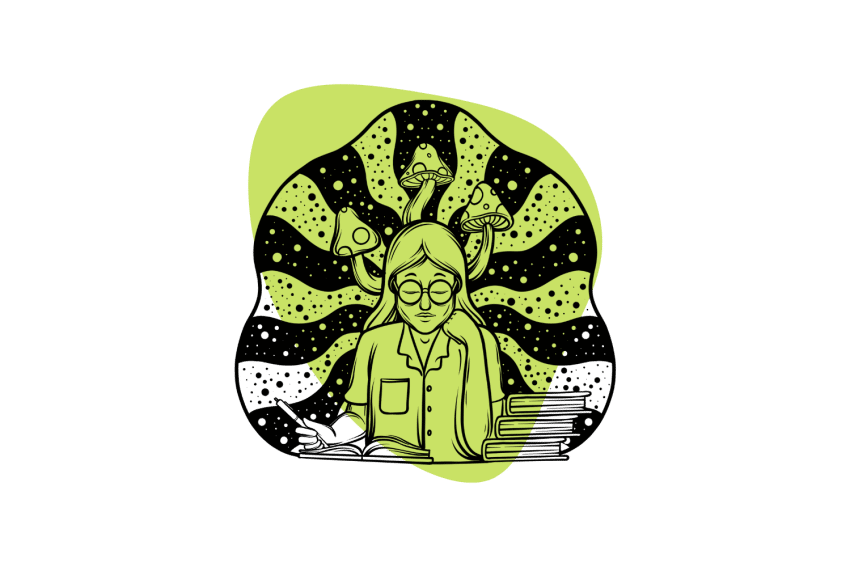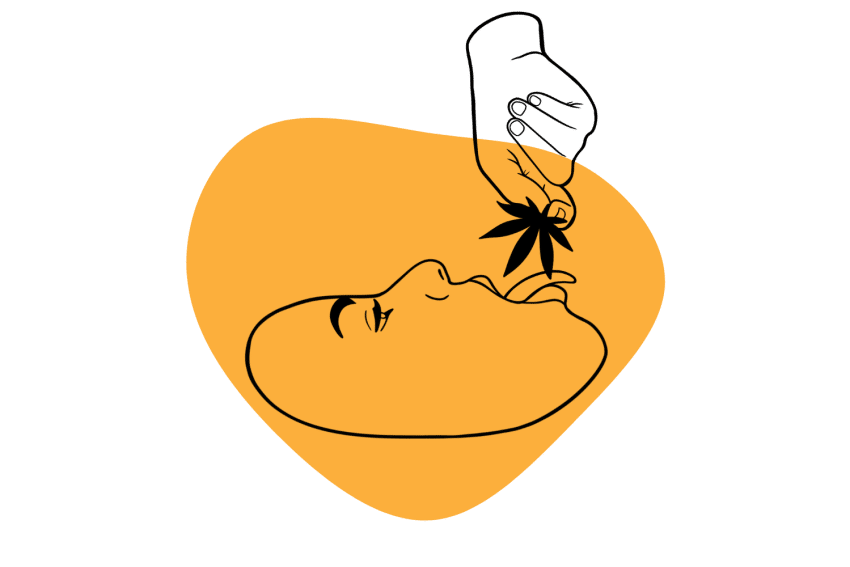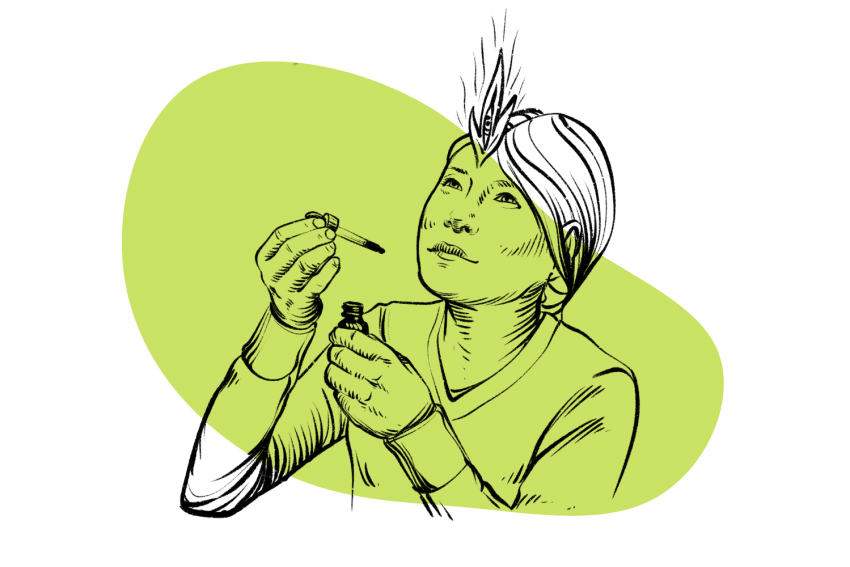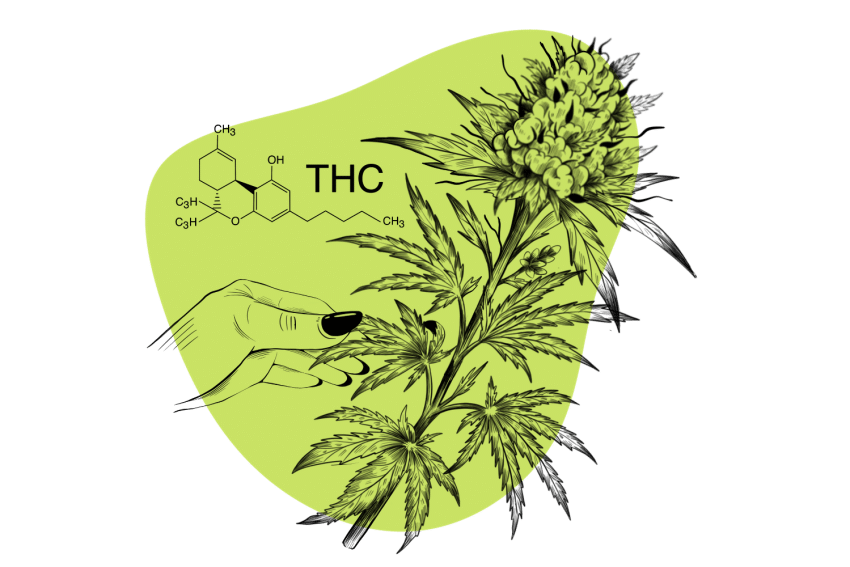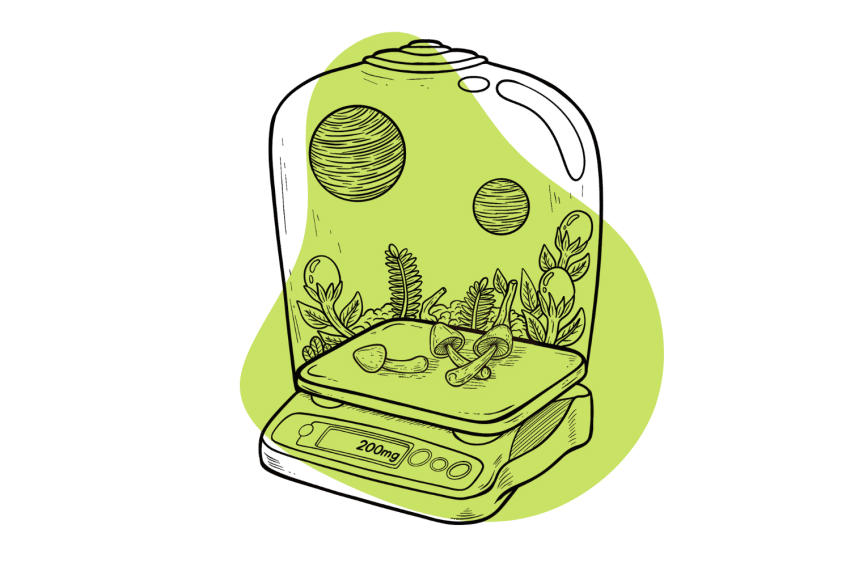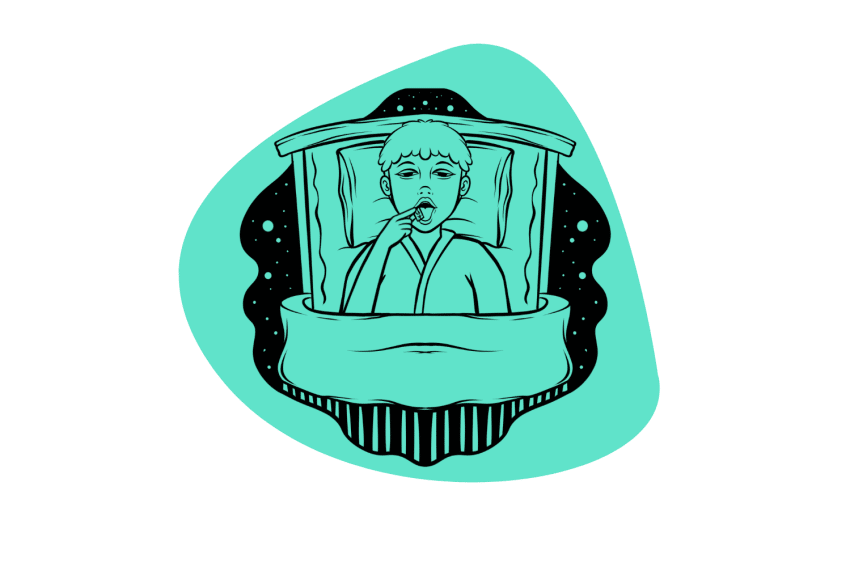The Stamets Stack: 3 Days on, 2 Days Off
“I see microdosing as the next wave in pharmaceuticals.” — Paul Stamets.
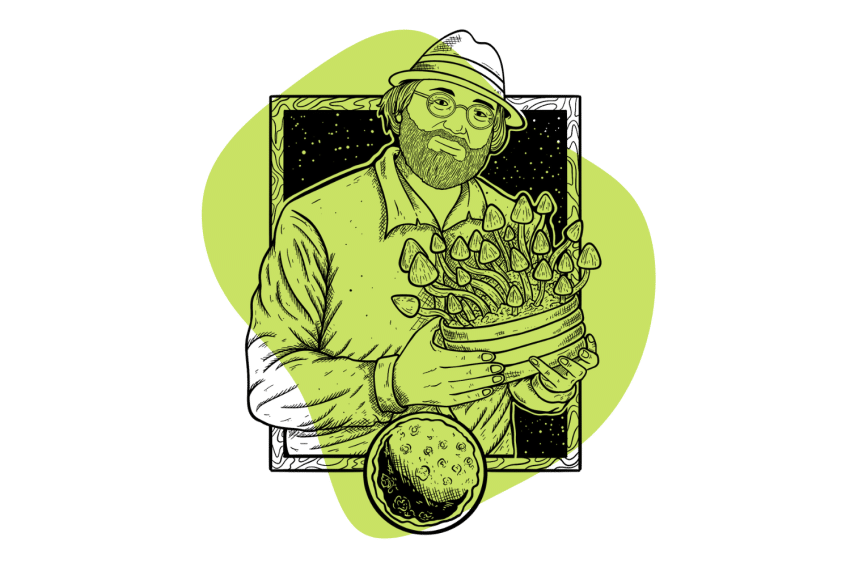
Paul Stamets is an advocate for the sub-perceptual and psychedelic use of magic mushrooms. He’s an industry leader and has been at the head of some important studies looking into the potential benefits of microdosing psilocybin.
He has famously developed a microdosing method known as the Stamets Stack — a formula that combines lion’s mane and psilocybin mushrooms with niacin. The Stamets Stack has revolutionized the way people microdose and may improve the neurological benefits of low-dose psilocybin.
Delve into this article to find out who Paul Stamets is, his views on microdosing, and how his “Stack” may help repair neurological damage and seed new neural pathways in the brain…
Related Guides: Microdosing 101 | Magic Mushrooms 101 | Psilocybin vs. Psilocin | Who Discovered Magic Mushrooms?
Who is Paul Stamets?
Paul Stamets is a famous American mycologist. A mycologist is a scientist who specializes in the study of fungi, including their biology, ecology, taxonomy, and interactions with other organisms.
He was born in the state of Ohio in 1955 and is an advocate for the use of edible, functional, and psychedelic fungi for medical, nutritional, and health purposes. He also believes that mushrooms can heal, sustain, and regenerate life on Earth after the environmental impact that we as a species have inflicted on our planet.
Stamets is an industry leader in his field. He’s written over six books, and his entrepreneurial skills have allowed him to grow several businesses, including Fungi Perfect and Host Defense.
Fungi Perfecti is a company that sells cultivation equipment, medicinal mushroom cultures, and educational resources in the field of mycology. Host Defense is a mushroom supplement brand that “bridges the gap between mushroom mycelium and human health.”
Stamets has been in a variety of documentaries, hosted TED Talks, been on a variety of podcasts, and is regularly interviewed by a range of large media outlets. He’s a true advocate for the power of mushrooms. If you’re even mildly interested in mushrooms, you’ve probably heard this guy speak.
He has received numerous awards for his innovations in the mycological space. Stamets has received the National Mycologist Award from the North American Mycological Association, the Invention Ambassador Award from the American Association for the Advancement of Science, and the Gordan and Tina Wasson Award from the Mycological Society of America.
Paul’s studies into the effects of psilocybin mushrooms are vast. His research on psychedelic fungi and his work with Host Defense led to the development of “the Stamets Stack.”
The Stamets Stack combines Lion’s Mane (a medicinal mushroom) with niacin (vitamin B3) and psilocybin (the psychoactive component in magic mushrooms. He developed this “stack” after observing the combination’s capacity to create new neurons, repair neurological damage, and create new neural pathways in the brain (more on this later)…

What is Microdosing?
Microdosing is the action of consuming around 10% of a normal psychoactive dose of a psychedelic substance such as psilocybin or LSD (lysergic acid diethylamide). This is considered a “sub-perceptual dose” otherwise called “a microdose.”
A microdose is too small to alter a person’s perception but large enough to deliver subtle changes in cognitive function. Advocates for microdosing psilocybin claim that the practice boasts a range of health benefits. Microdosing shrooms may enhance cognitive function, regulate mood, increase creativity, enhance focus, and elevate life satisfaction.
Unlike a psychoactive dose, the goal of microdosing psilocybin isn’t to induce a mind-bending, life-changing psychedelic experience.
Instead, it’s to reap the potential therapeutic benefit of the substance while remaining in control of our senses:
- A standard psychedelic dose of magic mushrooms is around 1–3 grams of a dried average-potency shroom such as Psilocybe cubensis. This is enough to induce euphoria, hallucinations, altered perception, and deep introspection.
- A microdose is around 10% of a psychedelic dose — 0.10–0.30 grams of dried Psilocybe cubensis mushrooms.
Potential Benefits of Microdosing Magic Mushrooms
There’s not as much evidence that supports low-dose psilocybin use as there is for the psychedelic use of psilocybin in therapy. However, an abundance of first-hand reports and experiences support magic mushroom microdosing. Thousands of individuals claim that the act has produced life-changing results.
The potential benefits of microdosing psilocybin include:
- Improving focus
- Increasing attention span
- Enhancing creativity
- Improving overall mood
- Easing symptoms of depression
- Easing symptoms of anxiety
- Boosting productivity
- Increasing energy
- Establishing new habits & cognitive patterns
- Reducing stress
- Relieving headaches & migraines
- Improving life satisfaction
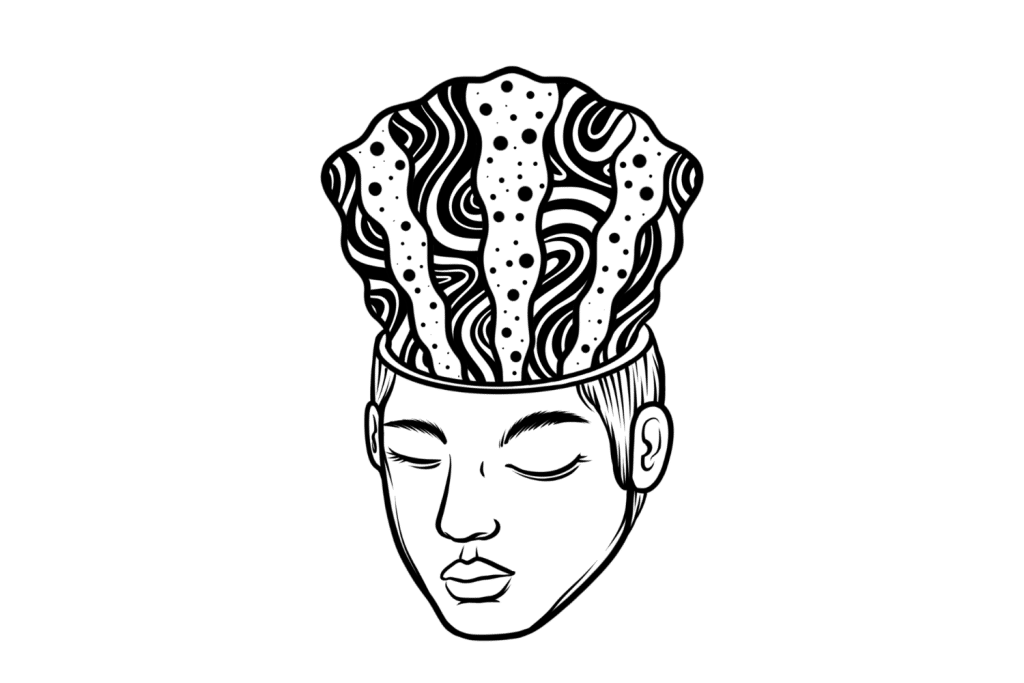
Paul Stamets’ Views on Microdosing
Paul Stamets is an advocate for the use of fungi for health and environmental purposes. He has expressed supportive views on microdosing psychedelic substances — particularly psilocybin mushrooms.
Stamets believes that microdosing psilocybin offers a range of benefits for cognitive function, mental health, and overall health and well-being. He has played a large part in numerous studies and contributed to several research papers assessing the medicinal value of psychedelic and sub-perceptual psilocybin dosing.
He suggests that psilocybin mushrooms (alongside other species of fungi) have neuroprotective properties. He believes that consuming psilocybin microdoses can support brain health and longevity by promoting neurogenesis and synaptic plasticity. He has also written about the potential of psilocybin in protecting against age-related cognitive decline and neurodegenerative diseases such as Alzheimer’s disease [1].
Paul views microdosing as a promising medication for various mental health conditions, including depression, anxiety, PTSD, and substance addiction. He suggests (among others) that microdosing offers relief from symptoms of depression and anxiety as well as promotes emotional resilience and mood regulation [2].
Stamets’ greatest contribution to the microdosing space is his involvement in “microdose.me” alongside the Quantified Citizen in Vancouver. This free mobile application (available on IOS and Android) serves as a vessel for the largest microdosing meta-study on the planet.
Microdose.me was designed to measure the effects of microdosing psychedelics. It allows people to input their chosen substance, dosage, and their reason for medicating with psychedelics. It measures mood and provides a range of activities for testing memory, eyesight, and hearing.
The application collects data from over 14000 active microdosers and compiles the results to assess the overall effectiveness of microdosing certain substances. The results so far show that microdosing classic psychedelics such as LSD (lysergic acid diethylamide) and psilocybin show promise for mood regulation and a reduction of symptoms in people suffering from depression and anxiety [3].
The Stamets Stack: Optimizing Psilocybin Microdosing
The Stamets Stack utilizes three natural ingredients: Lion’s Mane mushrooms, psilocybin mushrooms, and niacin (vitamin B3). These ingredients work synergistically and the resulting neurological impact could be down to a possible entourage effect similar to that of cannabis.
It’s not fully understood how these three elements work together but Paul makes it clear that each component is vital in the protocol.
Let’s take a look at what these components are and the part they play in the Stamets Stack:
1. Lion’s Mane (Hericium erinaceus)
Lion’s Mane (Hericium erinaceus) is a peculiar-looking mushroom that gets its common name from its shaggy, hair-like appearance. This functional mushroom is slow-growing and can be found sprouting from the wood of dead or dying deciduous trees. It can also be cultivated on grain in an artificial environment.
Active compounds in lion’s mane mushrooms such as Hericenone C and Hericene A may harbor neurotrophic properties [4]. Lion’s mane mushrooms and extracts could promote the growth and differentiation of neurons through an action known as nerve growth factor (NGF).
NGF plays a key role in preventing cognitive decline and the properties of lion’s mane could help slow and prevent neurodegenerative diseases.
Stamets include this mushroom in the Stamets Stack to enhance the benefits of psilocybin. He calls lion’s mane “the second smart mushroom” — psilocybin mushrooms being the first.
2. Niacin (Vitamin B3)
The role of niacin (vitamin B3) is to help the body convert food into usable energy. It’s a vital vitamin for digestive function and the health of the central nervous system. Paul believes that niacin improves the absorption of psilocybin when used in the Stamets Stack.
3. Psilocybin (From Psilocybe cubensis or Similar)
Psilocybin from mushrooms such as Psilocybe cubensis, Psilocybe semilanceata, or Psilocybe mexicana is the psychoactive component in the Stamets Stack. These mushrooms are illegal in most countries — this is why Paul has yet to include a “Stamets Stack” supplement to the Host Defense range.
Psilocybin is capable of inducing intense psychedelic effects when taken in perceptual doses. However, the dose of psilocybin used in the Stamets Stack is too low to induce any noticeable hallucinatory responses.
The role of psilocybin in this formula is to support cognitive function, elevate mood, and support brain health and longevity by promoting neurogenesis and synaptic plasticity.
Related: Psilocybe stametsii (Named After Paul Stamets)
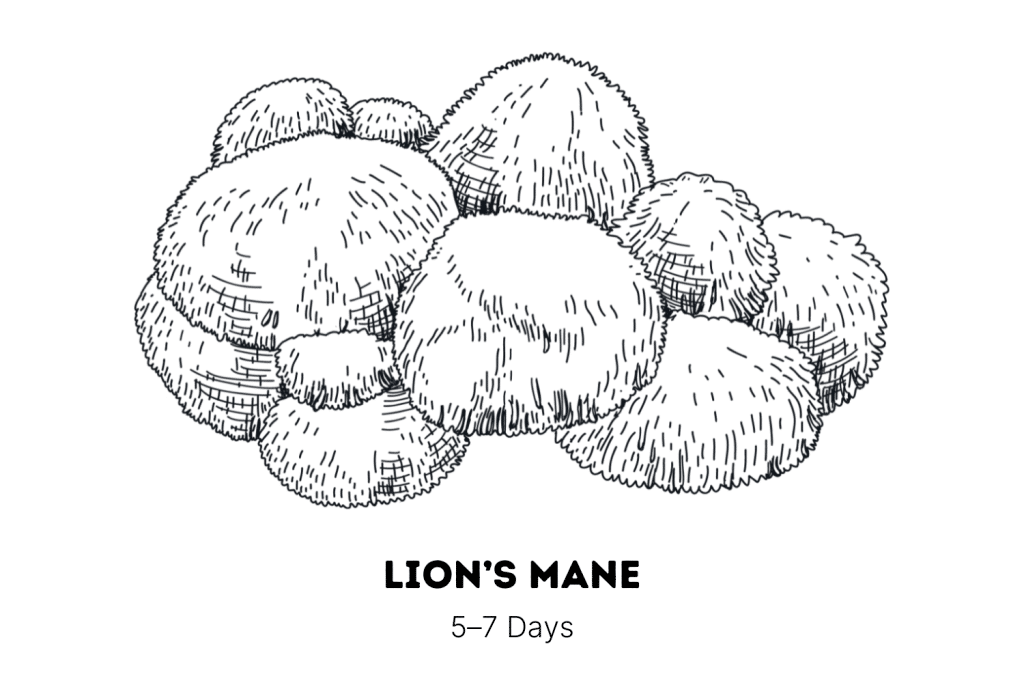
The Stamets Stack Protocol: According to Paul Stamets
Learning about the ingredients in the Stamets Stack and why they work synergistically to support cognitive function is just a small element of this microdosing concept. If you want to microdose using the Stamets Stack you’ll need to understand how to create the formula accurately and how to implement it into your routine according to Paul Stamets protocol.
In this section, you’ll learn how to consume this nootropic blend effectively…
The Stamets Stack Formula
Paul recommends different dosages depending on body weight. People who are under 74 kg (154 lbs) should start with a dose on the lower end of the scale and people over this weight should start on the higher end of the scale.
Note: If you’ve never used psychedelics before, it’s best to start with a lower dose regardless of body weight. When you begin your microdose journey, consume your first few doses in a controlled environment to monitor how your body reacts.
With that said, here’s the Stamets Stack formula:
- Psilocybin Mushroom Powder: 100–300 mg
- Lion’s Mane Mushroom Powder: 500–1000 mg (dried mushroom powder) or 50–200 mg (powdered extract)
- Niacin (Vitamin B3): 100–200 mg
The best way to combine and consume a Stamets Stack dose is to fill pill capsules. Measure doses of all three ingredients accurately, mix well and fill up empty pill capsules. Several capsules can be filled at once by multiplying the dose of each ingredient (by 10 for example) and dividing across the same amount of capsules (10 in this example).
Note: You’ll need accurate weighing scales for this process that can weigh to at least two decimal places (0.00).
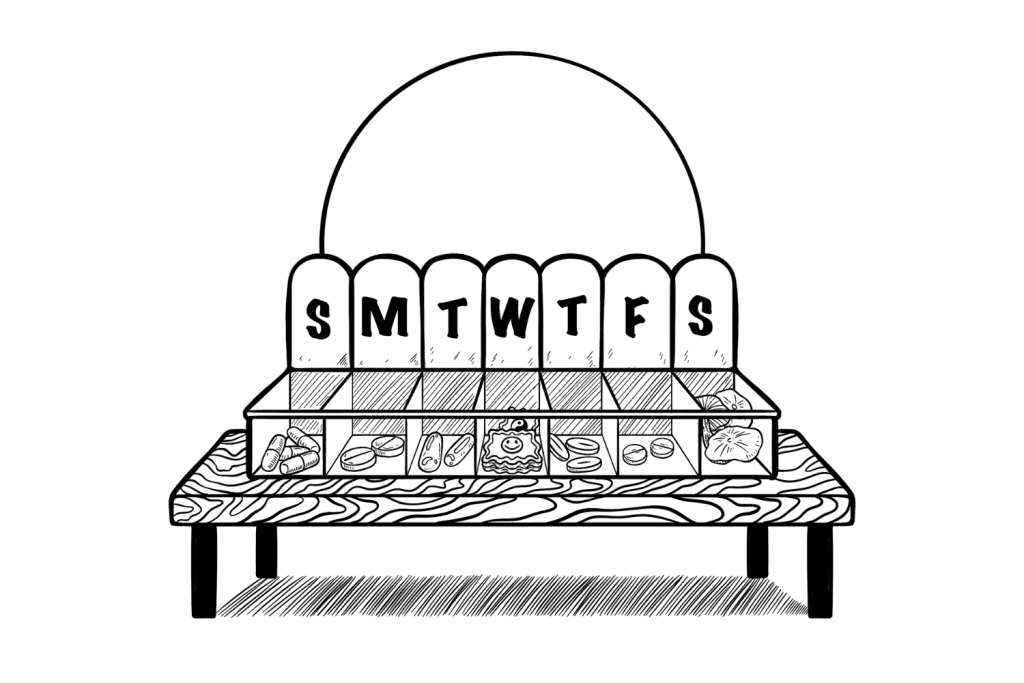
The Stamets Stack Protocol
To benefit from the Stamets Stack you must follow the protocol. It’s not as simple as taking a capsule every day. In fact, consuming sub-perceptual doses of psilocybin daily without breaks could be detrimental.
The Stamets Stack protocol is simple. It involves four microdosing weeks followed by two “rest weeks.” Each microdosing week consists of four microdosing days and three non-microdosing days.
Here’s a rundown:
- Day 1–4 (Microdosing Days): Consume one dose of the Stamets Stack once daily ensuring to stay hydrated throughout the day.
- Day 5–7 (Non-Microdosing Days): Cease consuming the Stamets Stack doses altogether. Alternatively, remove the psilocybin component and continue to consume lion’s mane and niacin.
- Cycle: Continue for four consecutive weeks. Stop dosing immediately if any serious negative side effects occur
- Day 28–42 (Reset Days): Cease consuming the Stamets Stack doses for two consecutive weeks. Alternatively, remove the psilocybin component and continue to supplement with Lion’s Mane and niacin.
- Cycle: After 14 reset days, continue the cycle as written above from day 1.
These cycles can be repeated for multiple rounds or indefinitely. Once you’ve achieved your desired results, you can stop the program altogether and implement it again when you feel your cognitive function declining.
Important note: There’s limited research on how psilocybin microdoses affect the body long term. Proceed with caution and be attentive to how your body reacts to the substance.
Benefits of Microdosing Using the Stamets Stack
Paul Stamets designed the Stamets Stack protocol to benefit cognitive function and benefit neurogenesis. However, his hypothesis isn’t backed by clinical trials and is yet to be reviewed by larger medical institutions.
Regardless of the lack of studies surrounding the Stamets Stack, hundreds of people claim to have benefited from the protocol. This triple blend of ingredients is intended as a nootropic — a brain-enhancing formula used to enhance memory and cognitive function.
Here are some of the potential benefits of the Stamets Stack:
- Ability to create new neural pathways in the brain
- Ability to repair neurological damage
- Alleviating symptoms of depression
- Improvement of creativity
- Improvement of focus
- Mediating the effects of brain aging
- Reduction of anxiety
- Reduction of irritability
- Regeneration of visual & auditory neurons
- Relief from cluster headaches
- Relief from PTSD symptoms
- Regulation of mood & emotion

Implementing the Stamets Stack as Part of a Healthy Lifestyle
Implementing the Stamets Stack as part of a healthy lifestyle involves incorporating microdosing with other complimentary lifestyle adjustments to promote overall well-being.
You can’t expect life-changing results from the Stamets Stack if you live an otherwise unhealthy lifestyle. This isn’t a “miracle supplement” that’ll magically turn your life around. Discipline, healthy habits, and mindfulness are required if you’re to benefit from this regime and become the person you strive to be.
Here’s how you can integrate the Stamets Stack into your routine and work toward an overall healthier lifestyle:
1. Consume a Healthy Balanced Diet
Fueling your body with healthy, nutritious foods that are rich in vitamins, minerals, and antioxidants is vital if you want to improve your mental and physical health. Focus on incorporating plenty of fruits, vegetables, lean proteins, and healthy fats into your meals.
2. Incorporate Exercise into Your Routine
Engaging in regular physical activities such as walking, running, yoga, and swimming will improve your cardiovascular health, strengthen your muscles, and boost your mood.
In order to be consistent you should find activities you enjoy and refrain from over-exerting yourself. Try to keep a steady, regular exercise routine throughout your microdosing journey.
3. Practice Mindfulness
Cultivate mindfulness and present-moment awareness through practices such as meditation, deep breathing exercises, or walks in nature. Taking the time to slow down and cast your mind away from the day-to-day stresses of life enhances overall well-being.
Practicing mindfulness during your microdose journey provides time to reflect and assess your progress, goals, and achievements.
4. Set Goals and Intentions
Define clear goals and intentions before and during each cycle of the Stamets Stack. Set clear goals in terms of microdosing, health, and exercise. Outline what you wish to achieve from the experience and how you’re to get there.
Setting clear goals provides direction and motivation. Make sure to set realistic goals in achievable time frames.
5. Monitor Your Experience and Progress
Keep track of your experiences and progress while microdosing using the Stamets Stack and implementing lifestyle changes. Keeping a journal of your thoughts, feelings, observations, and physical/mental progress is a good idea.
Doing this allows you to reflect on your progress and adjust the microdosing schedule and/or lifestyle changes where needed.
6. Adjust as Needed
Be flexible and willing to adjust your microdosing protocol and lifestyle habits based on your individual needs. Listen to your body and mind. If you are experiencing negative side effects, lower the dosage or cease microdosing completely. If you feel as though you’re not benefiting from the protocol, consider increasing the dose or implementing other changes.
7. Remain Consistent
Stay committed to your microdosing regimen and healthy lifestyle habits, even when faced with challenges or setbacks. Consistency is key to success. If you’re to see positive benefits from microdosing, exercise, and other healthy habits you must be consistent, even when you’re unmotivated or challenged with a certain aspect of your life.
Frequently Asked Questions: Microdosing Magic Mushrooms
Intrigued by this read and want to learn more about microdosing magic mushrooms?
Check out the answers to the questions we frequently receive about magic mushrooms and microdosing below:
1. What’s the Difference Between a Microdose and a Macrodose?
You may have heard the terms “microdosing” and “macrodosing.” No, it’s not a spelling mistake, these two words describe different things.
Microdosing is the act of consuming 1/10th of a regular psychedelic dose of psilocybin or another psychedelic substance. Microdoses do not induce any psychedelic effects.
Macrodosing is the act of consuming a psychoactive dose of a psychedelic substance. Unlike microdosing, there’s no specific dosage guide when it comes to macrodosing. A macrodose could be 1/20th of a psychedelic dose or a full psychedelic dose. However, most people refer to macrodosing as a “light perceptual dose,” meaning mild effects are experienced but not a full-blown psychedelic experience.
2. Is it Easy to Grow Magic Mushrooms at Home?
It’s surprisingly easy to grow magic mushrooms at home. Even a complete beginner can successfully cultivate psilocybin-producing fungi with some basic knowledge, equipment, and time.
There are a couple of beginner-friendly ways to grow magic mushrooms at home. These cultivation techniques require minimal pieces of equipment, mushroom cultivation knowledge, and experience.
Uncle Ben’s Tek is the cheapest and easiest way to grow mushrooms. This cultivation technique involves the inoculation of a bag of microwavable rice with Psilocybe cubensis spores. The sealed, sterile bag is then left to colonize with mycelium before it’s opened and allowed to fruit.
Learn how to grow magic mushrooms using Uncle Ben’s Tek.
PF Tek is a little more complex but still easy for beginners to grasp. This technique requires cultivators to sterilize a series of substrate-filled mason jars before inoculating them with spores. The jars are then incubated, opened, and fruited.
Learn how to grow magic mushrooms using PF Tek.
3. What’s the Best Strain of Psilocybe cubensis for Microdosing?
Psilocybe cubensis is the most prevalent mushroom species on the planet. It’s favored by cultivators for its ease of growth. The species is made up of hundreds of different strains, many with varying tryptamine levels (psilocybin, psilocin, baeocystin, and other tryptamines).
Any strain of Psilocybe cubensis can be used for microdosing but lower-potency strains are easier to divide up into sub-perceptual doses.
The best strain for microdosing should contain relatively low levels of psilocybin and psilocin.
The Hillbilly strain is a strong candidate for microdosing. This strain famously won the “Microdose Champion” award in the Spring 2022 Oakland Hyphae Psilocybin Cup. The sample entered produced 0.49% total tryptamines (0.23% psilocybin and 0.11% psilocin). While this isn’t appealing for psychonauts looking to explore the depths of the psychedelic realm, it’s perfect for microdosers.
4. Can You Buy Magic Mushroom Microdoses Online?
Yes. You can buy magic mushroom microdoses online. However, their accessibility, quality, and legality differ depending on where you live.
Psilocybin is a restricted substance in most countries, and even in places where it has been “legalized” or decriminalized, there’s still not a free market. Even in so-called legal psilocybin states in the US, people must jump through government hoops to access the fungi.
There are a few exceptions to this. In the Netherlands, magic mushrooms are illegal, but psilocybin-producing sclerotia (magic truffles) are decriminalized. It’s possible to purchase magic truffle microdoses in physical Smart Shops and online from brands like Microdose Pro.
Canada is another place where magic mushrooms are more accessible. Although psilocybin is illegal, it’s possible to purchase high-quality psilocybin microdoses from a variety of brands online.
Related: Where to Buy Magic Mushrooms in Canada.
The United States is a little more tricky. Unlike Canada, the federal government enforces its drug laws strictly. Buying magic mushroom microdoses online in the US is risky. With that said it’s still possible…
Related: Where to Buy Magic Mushrooms Online In the United States.
Subscribe For More Psychedelics 🍄
References:
- Stamets, P. (2023). Psilocybin mushrooms of the world: an identification guide. Ten Speed Press.
- Rootman, J. M., Kiraga, M., Kryskow, P., Harvey, K., Stamets, P., Santos-Brault, E., … & Walsh, Z. (2022). Psilocybin microdosers demonstrate greater observed improvements in mood and mental health at one month relative to non-microdosing controls. Scientific Reports, 12(1), 11091.
- Rootman, J. M., Kryskow, P., Harvey, K., Stamets, P., Santos-Brault, E., Kuypers, K. P., … & Walsh, Z. (2021). Adults who microdose psychedelics report health related motivations and lower levels of anxiety and depression compared to non-microdosers. Scientific reports, 11(1), 22479.
- Lai, P. L., Naidu, M., Sabaratnam, V., Wong, K. H., David, R. P., Kuppusamy, U. R., … & Malek, S. N. A. (2013). Neurotrophic properties of the Lion’s mane medicinal mushroom, Hericium erinaceus (Higher Basidiomycetes) from Malaysia. International journal of medicinal mushrooms, 15(6).

